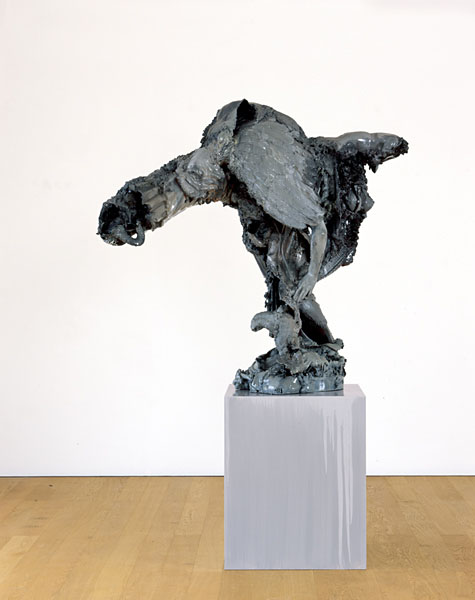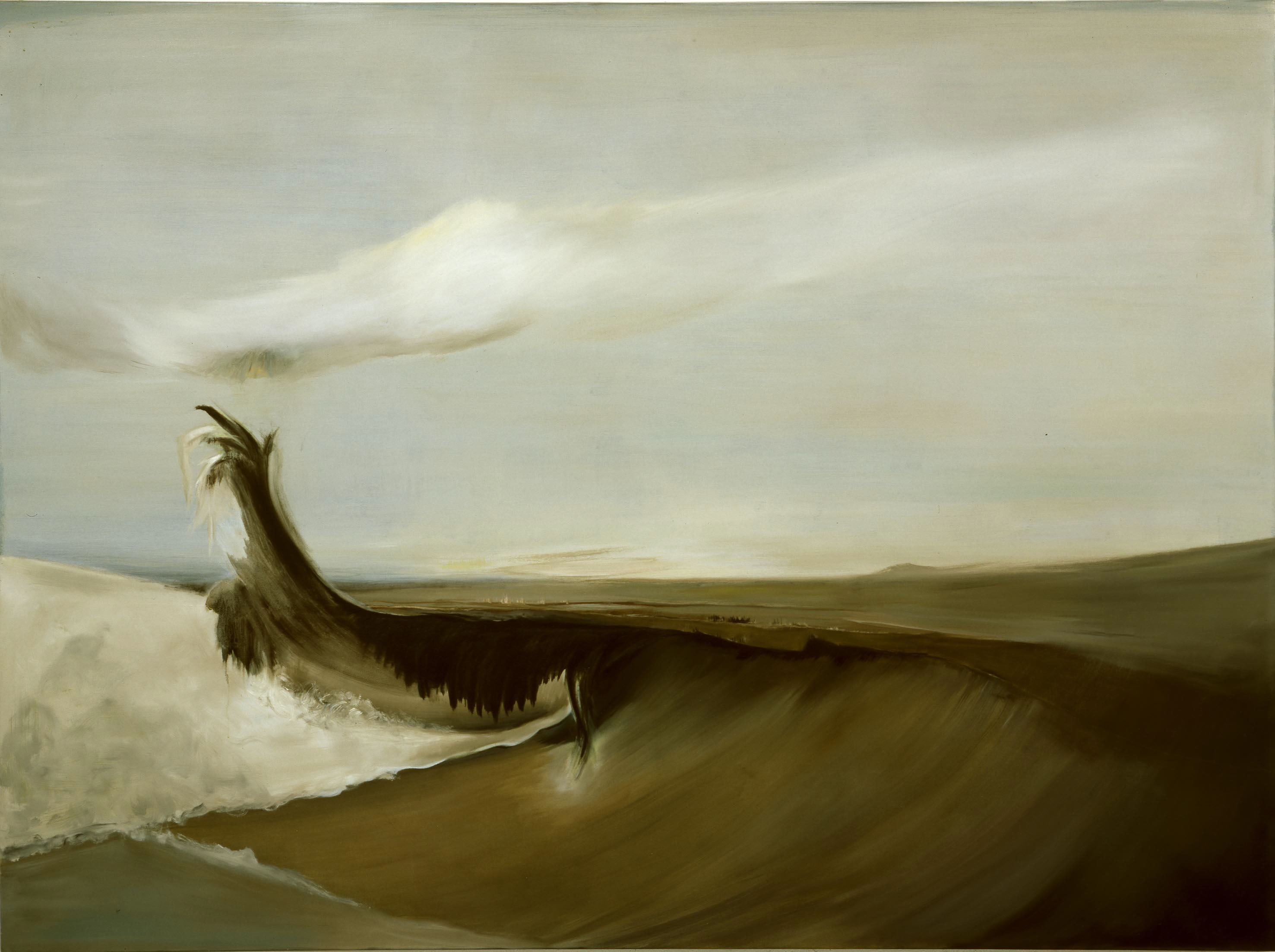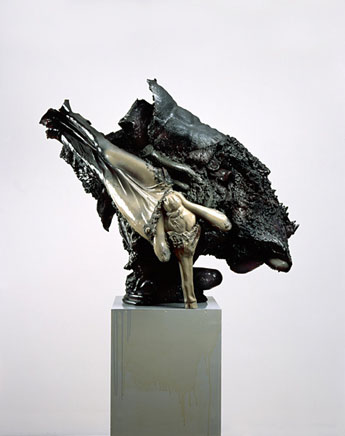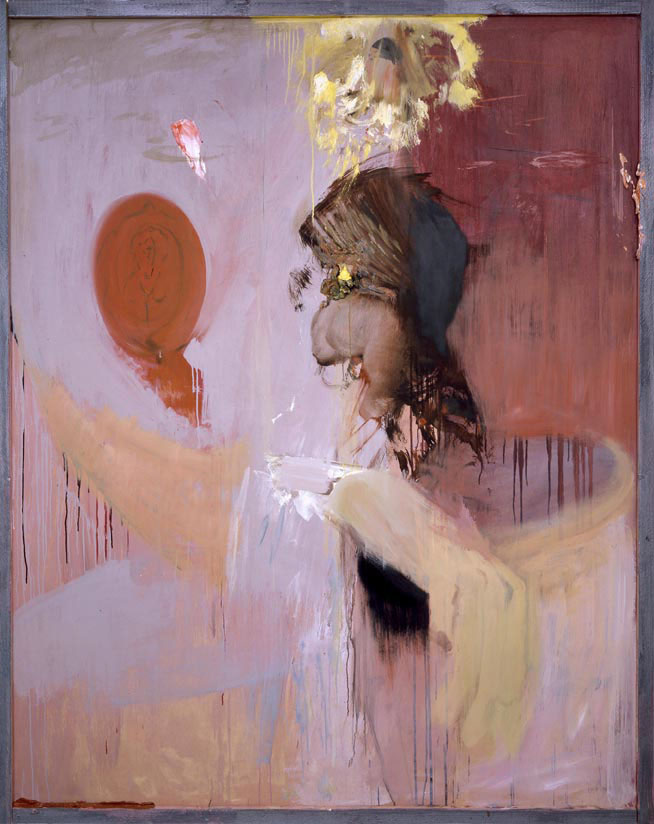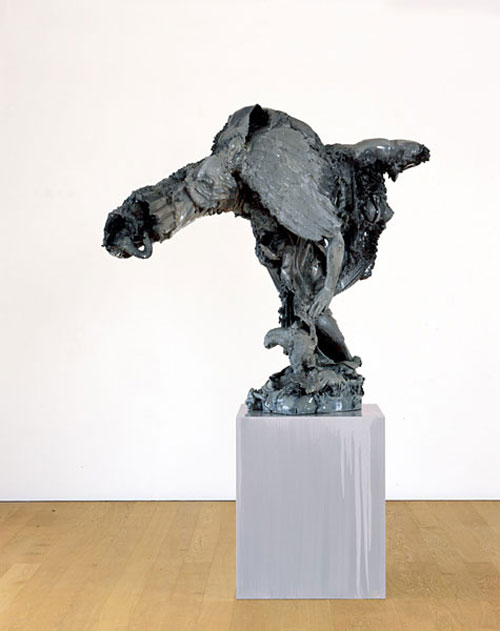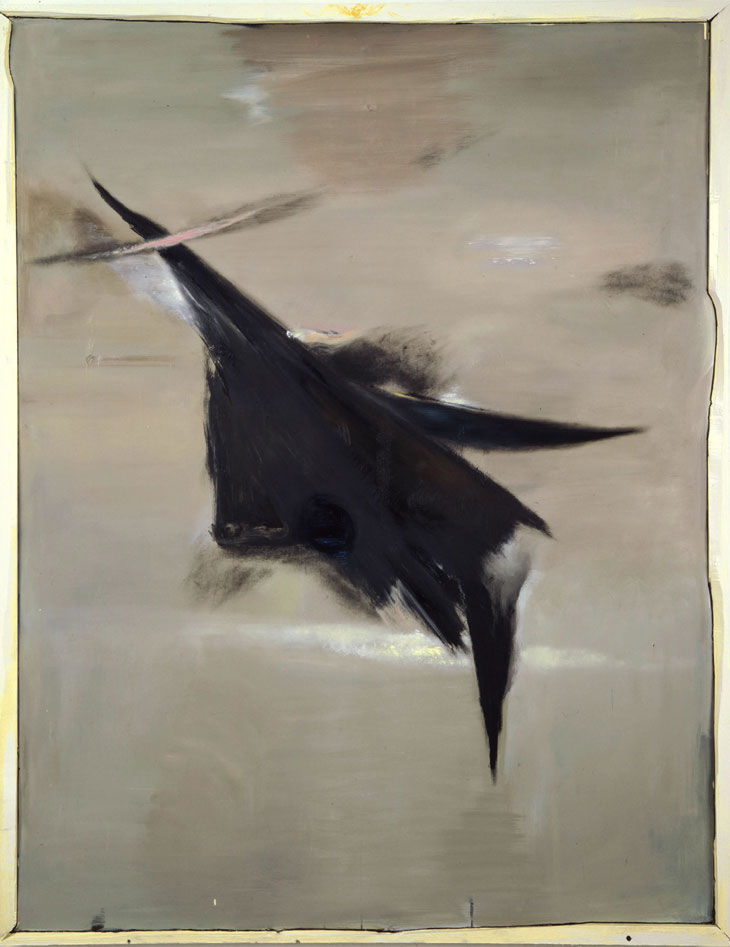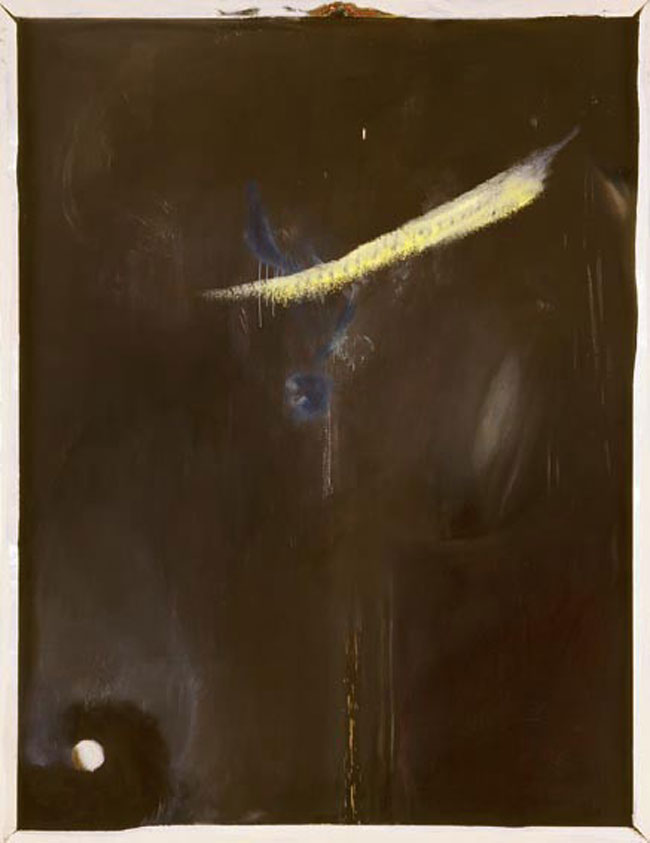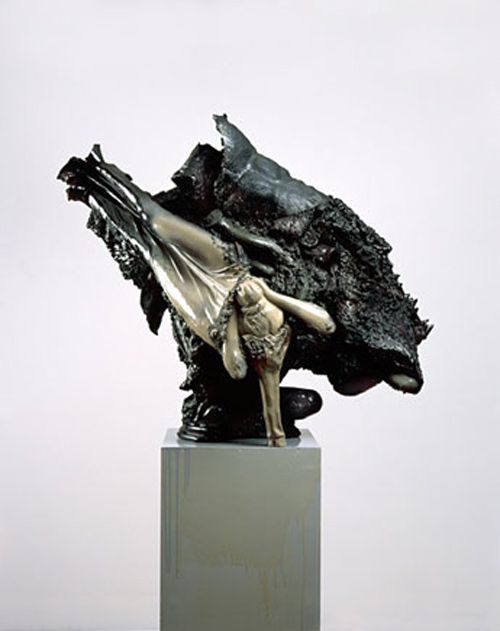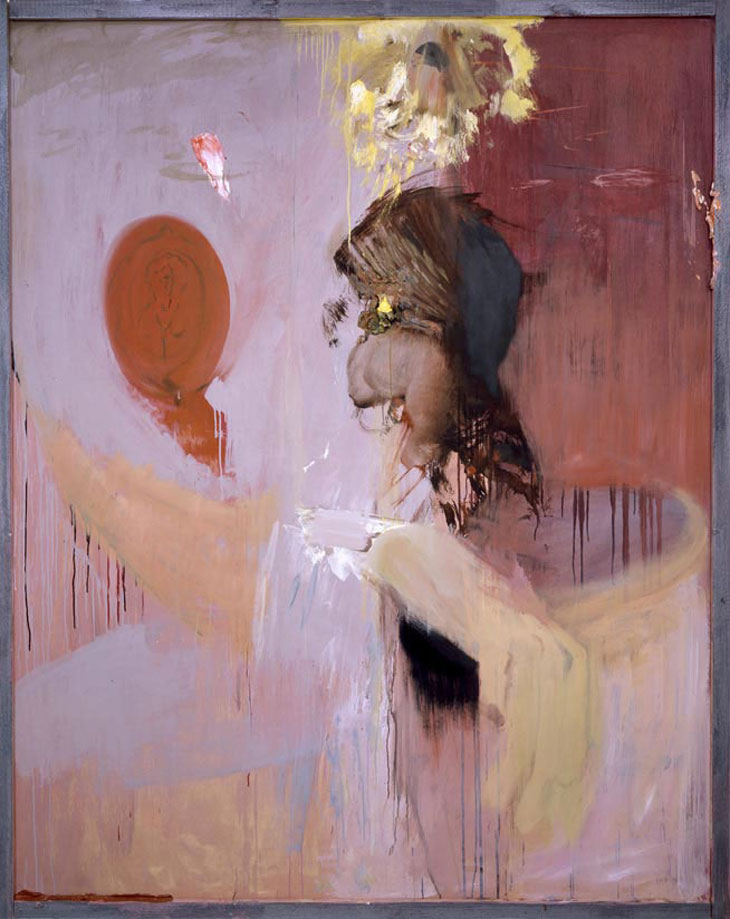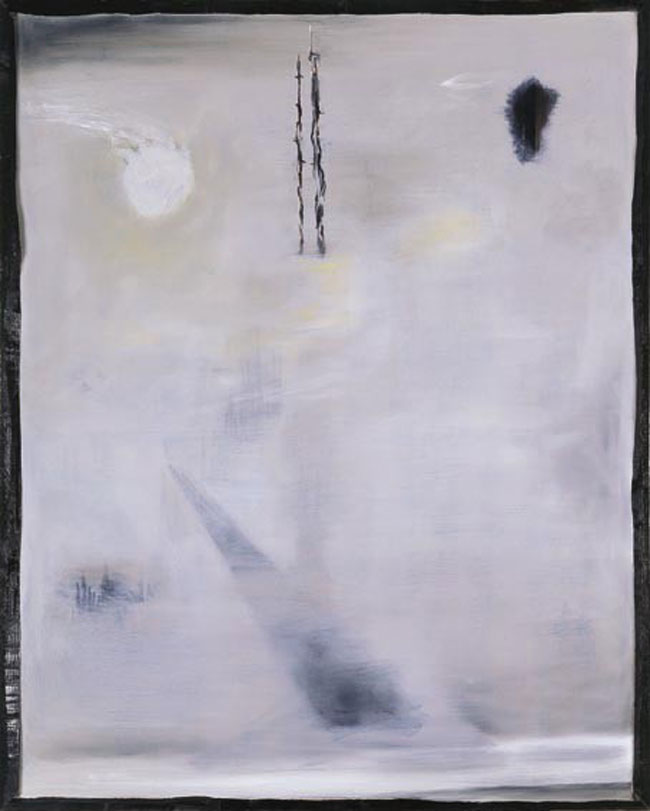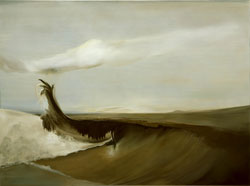Thomas Helbig’s precisely composed, semi-abstract paintings provoke a feeling of confusion and fascination in the viewer. The soft, muted geometric shapes and colours that stretch and blur over the surface of his wooden panels look slightly adrift, as if in the process of emerging from a backdrop of uncertainty, rife with possibility.
Helbig has said that his paintings ‘are about reduction to an unrecognisable state from which something new can then evolve. Concealing in order to reveal something, encrypting in order to make something visible.’ His ethereal brushwork, gauzy tones and subdued palette oscillate between hiding and unveiling familiar forms. Some of his paintings are rooted in teach-yourself art manuals, yet instead of focusing on precise copying he leaves the works unfinished, in a state of engagement with abstraction and a sort of larger-than-life open-endedness.
Maschine (2005) also deliberately plays with half-articulated meaning, as if delighting in teasing us with the idea of transition and pareidolia – the recognition of accidental anthropomorphic shapes in abstraction. Helbig’s subversion of the viewer’s expectations extends to his handmade frames, which are intentionally imperfect and
lead us to contemplate further the undefined and uncertain nature of what it is we are looking at.
The real tension in Helbig’s paintings is that nothing is simply what it first appears to be. Though anchored around portraits, landscapes or art historical subjects, his compositions suggest an eerie, remote intangibility. Wilde Mit Spiegel (2004) echoes a traditional mirror-facing vanitas, but here it has been fleshed out through an abject model whose monstrosity seems to be disintegrating and shifting before our very eyes.
